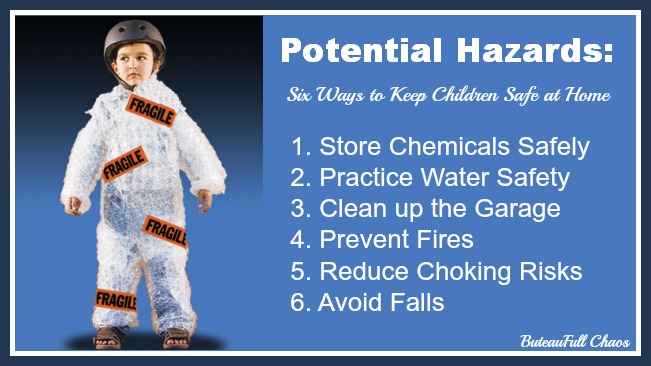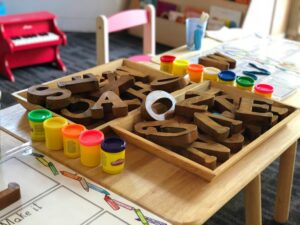
Children should always feel safe at home, but there are some surprising dangers present throughout the house. Safety can eventually be taught, and should be discussed often. Before your child learns safe habits, there are some things you can do to ensure they’re okay. Here are six hazards found in the home and how to avoid them.
1. Store Chemicals Safely
Household chemicals can cause eye irritation, airway irritation, stomach problems and poison. If you use bleach or other cleaning solvents in your home, make sure to put them out of the reach of small children. This could mean placing cleaning supplies on a high shelf or locking them up or use child safety latches. Have the number for poison control hanging on the fridge along with other emergency numbers in case there is a problem.
2. Practice Water Safety
Drowning can occur in even a few inches of water. Outside your home, drain small pools or cover larger pools of water when not in use. If a ladder is necessary to climb in the pool, pull it out when not in use. Make sure young children can not reach pools unattended. Never leave a child to swim alone. Inside your home, drain bathtubs and sinks that are not in use. Young children should never be left in the bathtub unattended.
3. Clean up the Garage
The garage can pose a number of potential hazards to children. Make sure chemicals are stored properly. Tools, especially sharp instruments and power tools, should not be left within reach of children. The garage door should be well maintained. “A poorly functioning garage door is more than just inconvenient, it’s dangerous,” explains The Garage Door Company, a garage door company in Calgary. Make sure your sensor is working and that your garage door will stop in the event a child walks or crawls under it.
4. Prevent Fires
Aside from the risk posed by a fire, the smoke from even a small fire can pose health risks. Prevent fires in your home by placing smoke detectors outside each sleeping area and make sure there are smoke detectors on each level. Test the batteries regularly. A good rule of thumb is to check smoke alarms when clocks change to be sure you check them enough. Keep a fire extinguisher in your home. Keep matches and lighters away from children, and follow the safety recommendations listed on electrical appliances.
5. Reduce Choking Risks
“Choking is a top cause of injury and death among children, especially children 3 years of age or younger,” explains healthychildcare.org. Items that can cause choking are a potential hazard for all children, especially toddlers. To reduce choking risks, keep small objects, such as coins, jewelry and deflated balloons, out of reach. Foods should be properly cut to ensure they are small enough to be eaten safely.
6. Avoid Falls
Small falls happen to children on a daily basis, but far falls pose a huge hazard to children of all ages, especially infants. Never leave an infant unattended on a changing table, sofa or other elevated area. Use safety gates near stairs to prevent falls and make sure they remain locked.
Children are accident prone, and even with all the caution in the world, they will have mishaps. A little preparation will help eliminate many potential hazards. Use these six tips to keep children safe at home.
[divider]
[author image=”https://plus.google.com/u/0/_/focus/photos/public/AIbEiAIAAABDCL3XiPetk97xbiILdmNhcmRfcGhvdG8qKDRhN2IxMTY4OTQ5N2IyNzZhZTY2MDIxMzk1YzljMmI3MmU0MjBiNjMwAbkYEX-bt_TyRGOScYpyoiDsULSe?sz=64″ ]This post is a guest post written by Kara Masterson. Kara is a freelance writer from West Jordan, Utah. She graduated from the University of Utah and enjoys writing about family health and spending time with her dog, Max. Information credited to Accident Attorney McAlester.[/author]
Graphic design by ButeauFull Chaos using PicMonkey!


